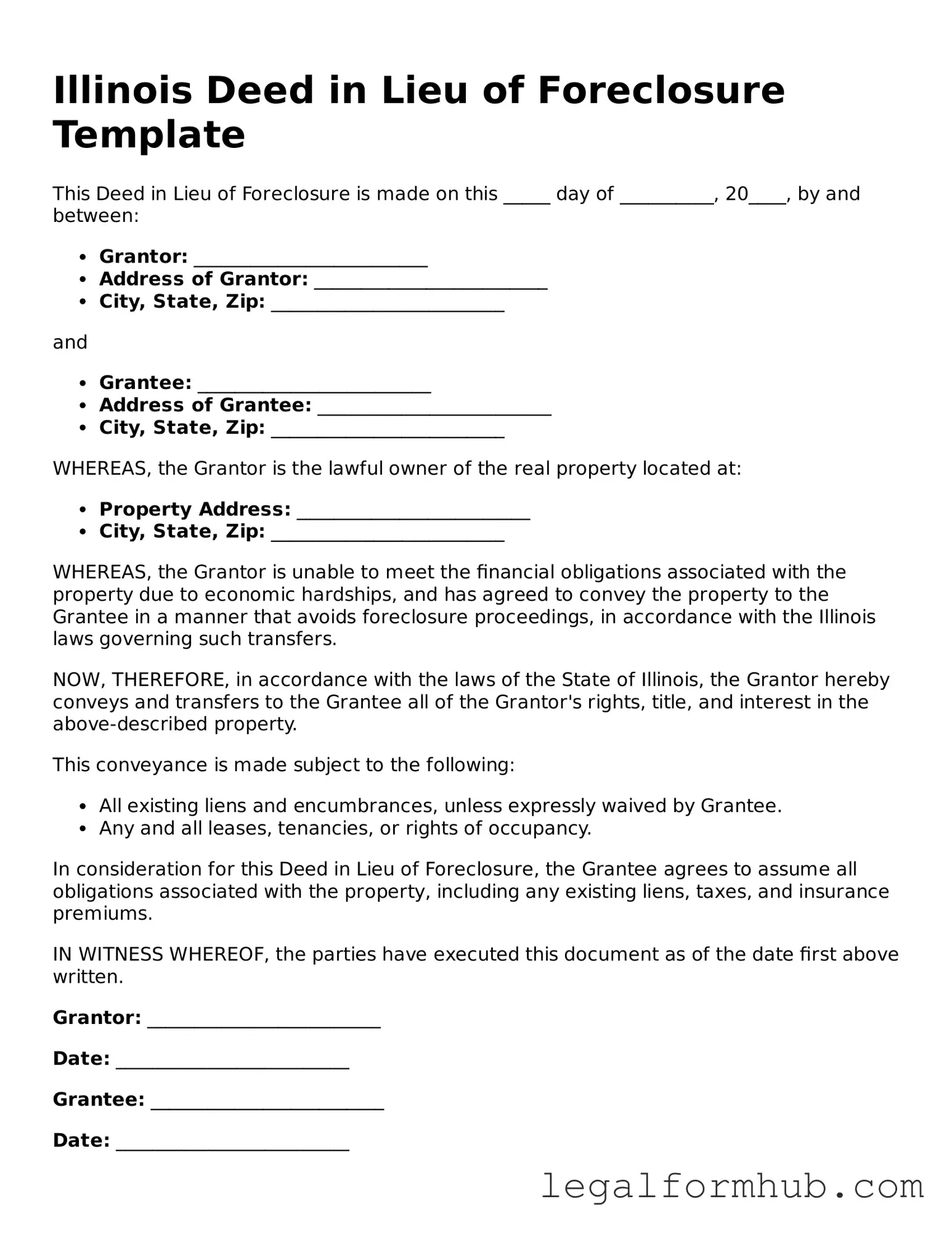The Illinois Deed in Lieu of Foreclosure is similar to a mortgage release document. A mortgage release is a legal document that signifies the lender's agreement to release the borrower from the mortgage obligation. In both cases, the borrower transfers the property back to the lender to avoid foreclosure. This process can help borrowers escape the financial burden of an underwater mortgage while providing lenders with a quicker way to reclaim the property without going through the lengthy foreclosure process.
Another document that shares similarities is a short sale agreement. In a short sale, the lender agrees to accept less than the full amount owed on the mortgage when the borrower sells the property. Like a deed in lieu, a short sale allows the borrower to avoid foreclosure, but it involves selling the property rather than transferring ownership directly to the lender. Both options can be beneficial for borrowers looking to mitigate the negative impact of foreclosure on their credit scores.
The loan modification agreement also bears resemblance to the deed in lieu of foreclosure. This document outlines new terms for an existing mortgage, often including lower monthly payments or extended repayment periods. While a deed in lieu involves giving up the property, a loan modification allows the borrower to keep their home. However, both documents aim to provide a solution to financial distress and help borrowers avoid the consequences of foreclosure.
A forbearance agreement is another document that can be compared to the deed in lieu of foreclosure. In a forbearance agreement, the lender temporarily suspends or reduces mortgage payments due to the borrower's financial hardship. This allows the borrower to catch up on payments without losing their home. Both documents serve as tools to help borrowers manage their financial difficulties, but they differ in that a deed in lieu results in the borrower relinquishing the property.
The bankruptcy filing is also relevant in this context. When individuals file for bankruptcy, they can halt foreclosure proceedings temporarily while they reorganize their debts. Like a deed in lieu, bankruptcy provides a way for borrowers to deal with overwhelming financial obligations. However, bankruptcy can have long-lasting effects on a person's credit, while a deed in lieu may be seen as a more proactive approach to resolving mortgage issues.
A quitclaim deed is another document that resembles the deed in lieu of foreclosure. A quitclaim deed allows one party to transfer their interest in a property to another party without making any guarantees about the title. While this is often used in situations like divorce or gifting property, it can also be utilized in a deed in lieu situation. Both documents involve the transfer of property rights, but a quitclaim deed does not specifically address the mortgage obligations tied to the property.
Understanding the complexities of various legal documents can significantly impact the decisions homeowners make during distressing financial times. For instance, when facing foreclosure, it's crucial to consider alternatives such as a Deed in Lieu of Foreclosure or exploring options to verify employment. The California Employment Verification form is an important tool that employers use to validate an employee's work status, ensuring compliance with regulations. If you're looking to manage your hiring process effectively, you can find the necessary resources by visiting Fill PDF Forms.
Lastly, a property settlement agreement can be compared to a deed in lieu of foreclosure, especially in divorce cases. This agreement outlines how marital property will be divided between spouses, which may include the transfer of a home. In situations where one spouse can no longer afford the mortgage, a deed in lieu may be used as a way to relinquish the property to the lender. Both documents facilitate the transfer of property ownership, but a property settlement focuses on the division of assets rather than addressing mortgage obligations directly.
